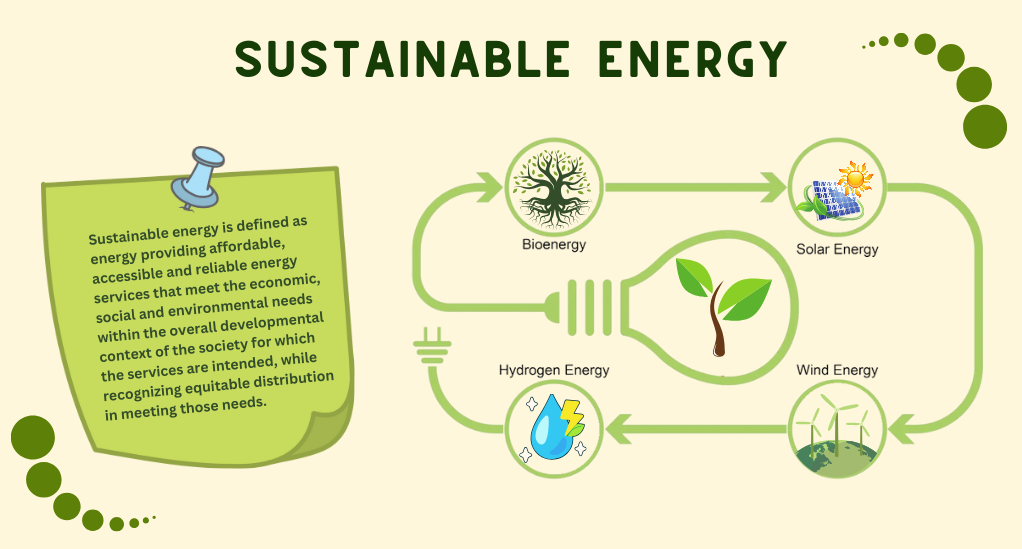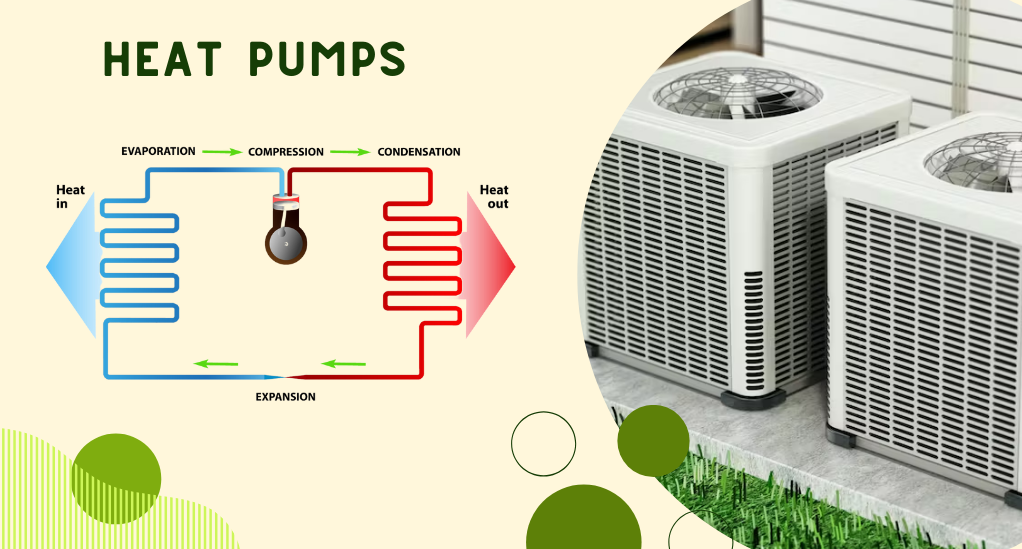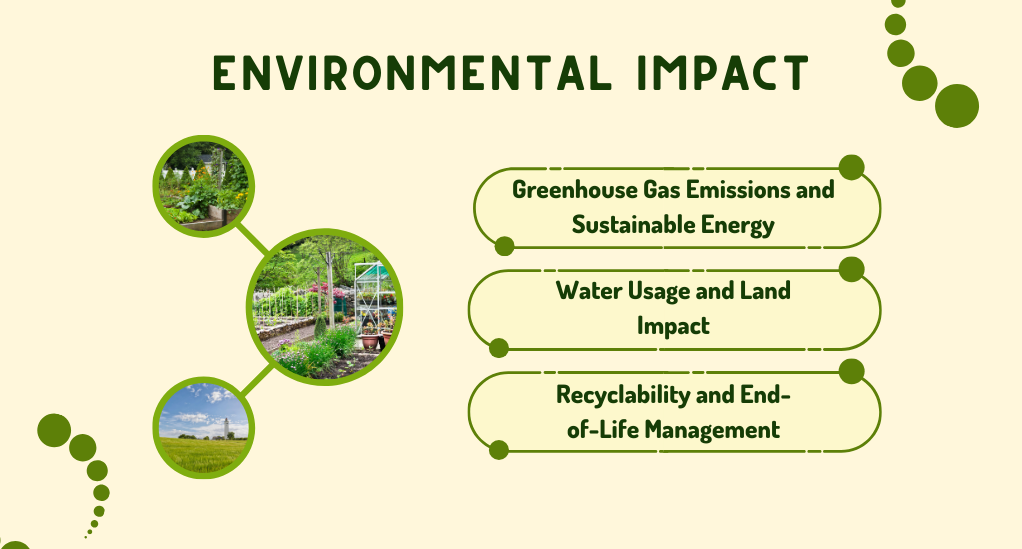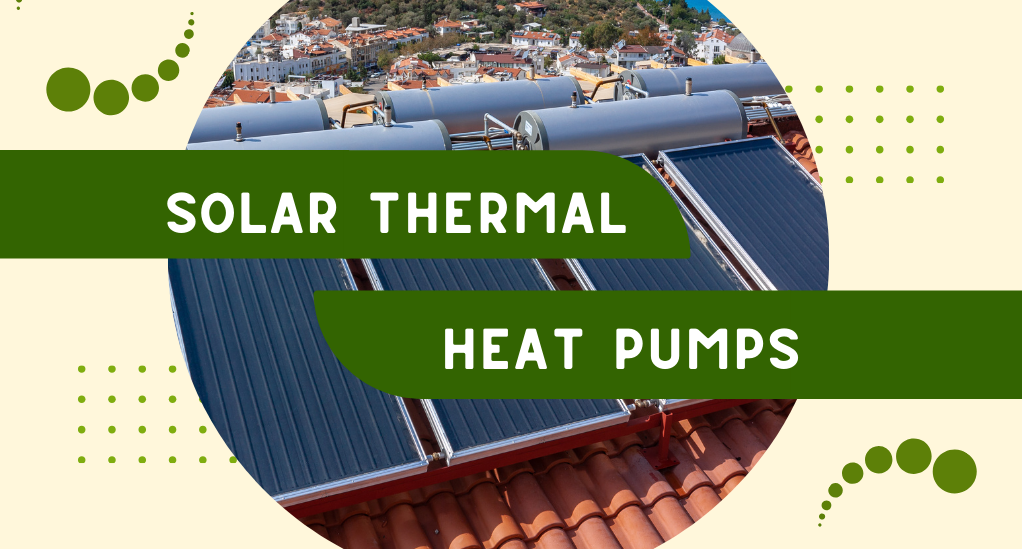In today’s rapidly changing climate, the quest for sustainable energy solutions has never been more urgent. As the world grapples with rising temperatures and unpredictable weather patterns, the focus has shifted towards sustainable heating and cooling methods that not only cater to our comfort but also ensure the well-being of our planet.
What is Sustainable Energy?
At its core, sustainable energy is energy that “meets the needs of the present without compromising the ability of future generations to meet their own needs.” This definition, coined by the United Nations Brundtland Commission in 1987, underscores the importance of adopting energy solutions that are both environmentally friendly and economically viable. Sustainable energy sources, such as solar and wind, are generally more environmentally friendly than their fossil fuel counterparts. However, the journey to sustainability isn’t just about choosing the right energy source; it’s also about the efficient and responsible utilization of these sources.

The Importance of Sustainable Heating and Cooling
Heating and cooling account for a significant portion of global energy consumption. In many regions, especially those with extreme seasonal temperature variations, these processes are essential for maintaining comfortable living and working conditions. However, traditional heating and cooling methods often rely on fossil fuels, contributing to greenhouse gas emissions and other environmental challenges.
| Traditional Methods | Sustainable Alternatives |
|---|---|
| Gas Boilers | Solar Thermal Systems |
| Electric Heaters | Heat Pumps |
| Air Conditioners | Geothermal Cooling Systems |
As the table illustrates, while traditional methods have been effective, they come at a significant environmental cost. Sustainable alternatives, on the other hand, offer the promise of comfort without compromising the planet’s health.
Solar Thermal Energy
Solar Thermal Energy, often simply referred to as solar heating, harnesses the sun’s immense power to generate heat. Unlike photovoltaic solar panels, which convert sunlight directly into electricity, solar thermal systems absorb sunlight to produce heat, which can then be used for various applications, from heating water to warming homes.
How Does Solar Thermal Energy Work?
The basic principle behind solar thermal energy is the absorption of sunlight by collectors, usually installed on rooftops or open grounds. These collectors, often made of dark-colored or mirrored materials, absorb sunlight and convert it into heat. The heat is then transferred to a fluid, typically water or a specialized heat-transfer fluid. This heated fluid can then be used directly, as in the case of solar water heaters, or can be used to produce steam to drive turbines and generate electricity in larger installations.
Types of Solar Thermal Systems
There are primarily three types of solar thermal systems:
- Flat Plate Collectors: These are the most common type of collectors, used mainly for domestic water heating. They consist of a dark flat plate to absorb sunlight, with tubes or channels for the fluid to flow through.
- Evacuated Tube Collectors: These consist of rows of transparent glass tubes, each containing an absorber plate fused to a metal tube. The space inside the tubes is a vacuum, which provides insulation and prevents heat loss.
- Concentrated Solar Power (CSP): Used primarily for electricity generation, CSP systems use mirrors or lenses to concentrate sunlight onto a small area, generating intense heat. This heat is then used to produce steam and drive turbines.
| Type | Application | Efficiency |
|---|---|---|
| Flat Plate Collectors | Domestic water heating | Moderate |
| Evacuated Tube Collectors | Domestic and commercial heating | High |
| Concentrated Solar Power | Electricity generation | Very High |
Benefits of Solar Thermal Energy
- Eco-friendly: Solar thermal systems produce no emissions, making them a clean energy source.
- Cost-effective: After the initial investment, the operational costs are minimal, leading to significant savings in the long run.
- Scalable: From small rooftop installations for homes to large-scale power plants, solar thermal systems can be tailored to various needs and scales.
- Low Maintenance: Once installed, these systems require minimal maintenance, further reducing their lifetime costs.
Challenges of Solar Thermal Energy
While solar thermal energy offers numerous benefits, it’s not without its challenges:
- Weather Dependency: The efficiency of solar thermal systems is dependent on sunlight, making them less effective on cloudy days or during winters in certain regions.
- Space Requirements: Especially for larger installations, a significant amount of space is needed.
- Initial Costs: The upfront cost for installing solar thermal systems can be high, though this is often offset by long-term savings.
Heat Pumps
Heat pumps, while not a new technology, have gained significant attention in recent years as a sustainable solution for heating and cooling needs. Unlike conventional heating systems that generate heat, heat pumps work by transferring heat from one place to another, making them incredibly efficient and environmentally friendly.

How Do Heat Pumps Work?
At the heart of a heat pump is a cycle of evaporation and condensation. A refrigerant fluid circulates between two heat exchanger coils. In one coil, the refrigerant absorbs heat from the surroundings (either the outside air, ground, or water) and evaporates. This vapor then travels to the second coil, where it releases the heat and condenses back into a liquid. This process can be reversed, allowing the heat pump to provide both heating in the winter and cooling in the summer.
Types of Heat Pumps:
- Air Source Heat Pumps (ASHP): These extract heat from the outside air, even in cold weather. They are the most common type of heat pump and are typically used for space heating and cooling.
- Ground Source Heat Pumps (GSHP): Also known as geothermal heat pumps, these extract heat from the ground. They are more efficient than ASHPs but have higher installation costs due to the need to bury coils underground.
- Water Source Heat Pumps: These extract heat from a nearby water source, such as a lake or river. They are less common but can be highly efficient in the right conditions.
| Type | Heat Source | Typical Efficiency |
|---|---|---|
| Air Source Heat Pumps | Outside air | Moderate to High |
| Ground Source Heat Pumps | Underground | High to Very High |
| Water Source Heat Pumps | Lakes, rivers, or ponds | High |
Benefits of Heat Pumps:
- Efficiency: Heat pumps can be up to three times more efficient than traditional heating systems, as they only require energy to move heat, not produce it.
- Versatility: They can provide both heating and cooling, making them suitable for year-round use.
- Low Carbon Footprint: By reducing the reliance on fossil fuels, heat pumps contribute significantly to lower carbon emissions.
- Cost Savings: While the initial investment can be higher than traditional systems, the operational costs are much lower, leading to long-term savings.
Challenges of Heat Pumps:
- Initial Investment: The upfront cost, especially for ground source heat pumps, can be substantial.
- Space Requirements: Ground source systems, in particular, require space for burying the coils.
- Electricity Dependency: While they reduce the need for fossil fuels, heat pumps still require electricity to operate, which can be a concern in areas where the electric grid isn’t powered by renewable sources.
In essence, heat pumps offer a compelling alternative to traditional heating and cooling systems. Their efficiency, combined with their environmental benefits, positions them as a cornerstone of sustainable energy solutions for the future.
Environmental Impact
The global push towards sustainable energy solutions is driven by the urgent need to combat climate change and reduce the environmental impact of our daily activities. Both Solar Thermal Energy and Heat Pumps, as discussed, offer promising avenues for sustainable heating and cooling. But how do they fare when it comes to their environmental footprint?

Greenhouse Gas Emissions and Sustainable Energy
One of the primary concerns with traditional heating and cooling methods is the emission of greenhouse gases (GHGs), particularly carbon dioxide (CO2). These emissions contribute to global warming, leading to a host of environmental and societal challenges.
- Solar Thermal Energy: Solar thermal systems produce no direct emissions. The environmental impact is primarily associated with the manufacturing, transportation, and installation of the systems. However, over their lifespan, they offset a significant amount of CO2 that would have been emitted by conventional heating methods.
- Heat Pumps: While heat pumps require electricity to operate, their high efficiency means that they use significantly less energy than traditional systems. In regions where the electricity grid is powered by renewable sources, the carbon footprint of heat pumps is minimal. Even in areas reliant on fossil fuels for electricity, the reduction in energy consumption often results in a net decrease in GHG emissions.
Water Usage and Land Impact
Beyond GHG emissions, it’s essential to consider other environmental factors, such as water usage and land impact.
- Solar Thermal Energy: Large-scale concentrated solar power (CSP) plants, especially those using wet-cooling systems, can consume significant amounts of water. However, newer CSP designs and residential solar thermal systems have a much lower water footprint.
- Heat Pumps: Ground Source Heat Pumps (GSHP) require land for burying the coils, which can impact the local ecosystem. However, this impact is often minimal and localized. Water Source Heat Pumps, if not properly managed, can potentially affect local aquatic ecosystems, but with careful design and monitoring, these impacts can be mitigated.
Recyclability and End-of-Life Management
The sustainability of any technology also depends on its end-of-life management.
- Solar Thermal Energy: Most components of solar thermal systems, including glass, metals, and plastics, are recyclable. As the industry grows, more efficient recycling methods are being developed to handle end-of-life solar thermal equipment.
- Heat Pumps: Many parts of a heat pump, such as the compressor, coils, and electronic components, can be recycled. Proper refrigerant management is crucial to prevent potential environmental harm.
Economic Considerations
The transition to sustainable heating and cooling solutions is not solely an environmental endeavor; it’s also an economic one. For homeowners, businesses, and governments alike, the cost-effectiveness of these technologies is a crucial factor in their adoption.
- Initial Investment and Long-term Savings
While the initial cost can be high for both Solar Thermal Energy and Heat Pumps, the long-term economic benefits are compelling. Reduced energy bills, along with government incentives, make these technologies financially attractive. - Government Policies and Incentives
Many governments worldwide offer incentives for sustainable energy projects. These include tax credits, rebates, and low-interest loans. Feed-in tariffs can also provide additional income for excess power. - Operational Costs and Maintenance
Once installed, both systems have low operational costs. Maintenance is minimal, typically involving periodic checks and occasional servicing.
Technological Advancements
The realm of sustainable heating and cooling is dynamic, with continuous research and development paving the way for groundbreaking innovations. These technological advancements not only enhance the efficiency of existing systems but also introduce novel solutions that redefine our approach to energy.
- Innovations in Solar Thermal Technology: Ongoing innovations in Solar Thermal Technology are improving our ability to harness sunlight for heating. This includes advanced materials that capture more sunlight efficiently and cutting-edge thermal storage solutions. We’re also witnessing the integration of hybrid systems that combine solar thermal and photovoltaic technologies for maximum utility.
- Advancements in Heat Pump Design and Efficiency: In the realm of Heat Pumps, advancements are making these systems more attractive for sustainable heating and cooling. Variable-speed compressors adjust to demand, enhancing efficiency. Smart controls interface with smart home systems for precise temperature control and optimization. Improved heat exchanger design and materials enable heat pumps to operate effectively in extreme temperatures.
- Emerging Technologies: Emerging technologies are expanding possibilities in sustainable heating and cooling. Solar-assisted heat pumps combine solar energy with heat pumps for highly efficient heating. Thermoacoustic heat pumps use sound waves to generate heat, promising highly efficient, low-maintenance solutions. These innovations offer a future of even more efficient and accessible sustainable heating and cooling solutions.
Conclusion
The journey towards sustainable heating and cooling is not merely a technological pursuit; it represents our commitment to a more environmentally responsible and economically viable future. Solar Thermal Energy and Heat Pumps stand as beacons of hope in the fight against climate change, offering substantial reductions in greenhouse gas emissions and the promise of long-term financial savings. As technology continues to advance and real-world success stories inspire change, the path towards sustainability becomes increasingly clear.
Looking ahead, the road to sustainable heating and cooling is one marked by innovation, policy support, and informed choices. Continued research and development will usher in even more efficient and accessible solutions, while government incentives and awareness campaigns will drive widespread adoption. Ultimately, our collective choices in embracing these technologies will help us reshape our relationship with energy, foster a harmonious coexistence between comfort and environmental stewardship, and pave the way for a more sustainable and resilient world for generations to come.

